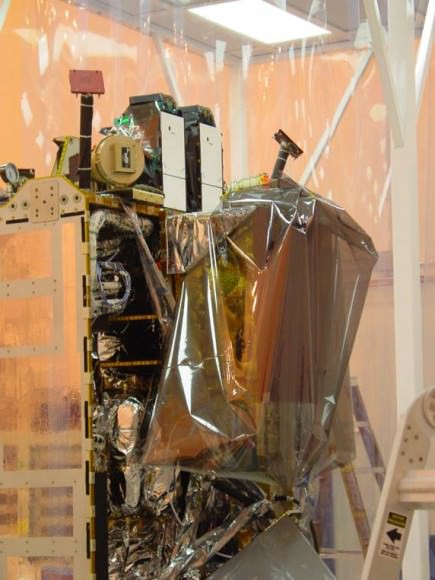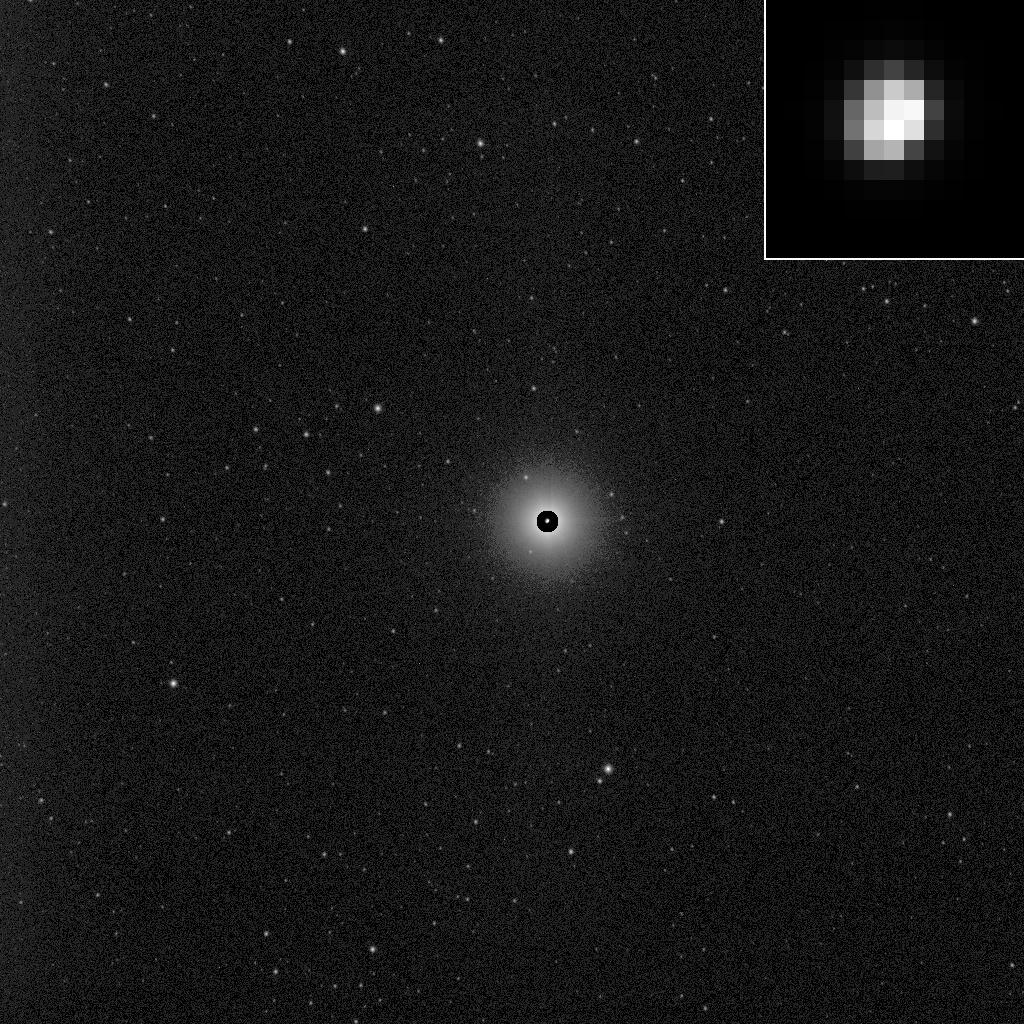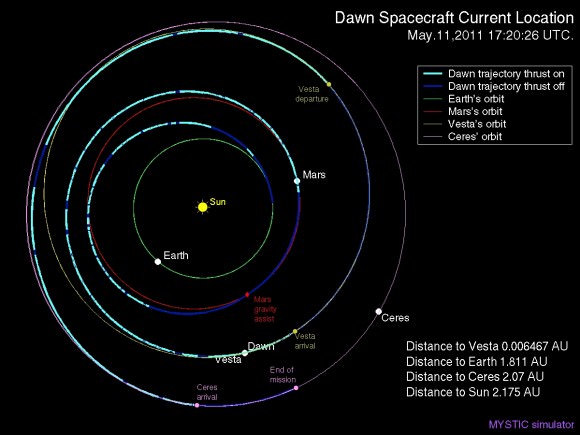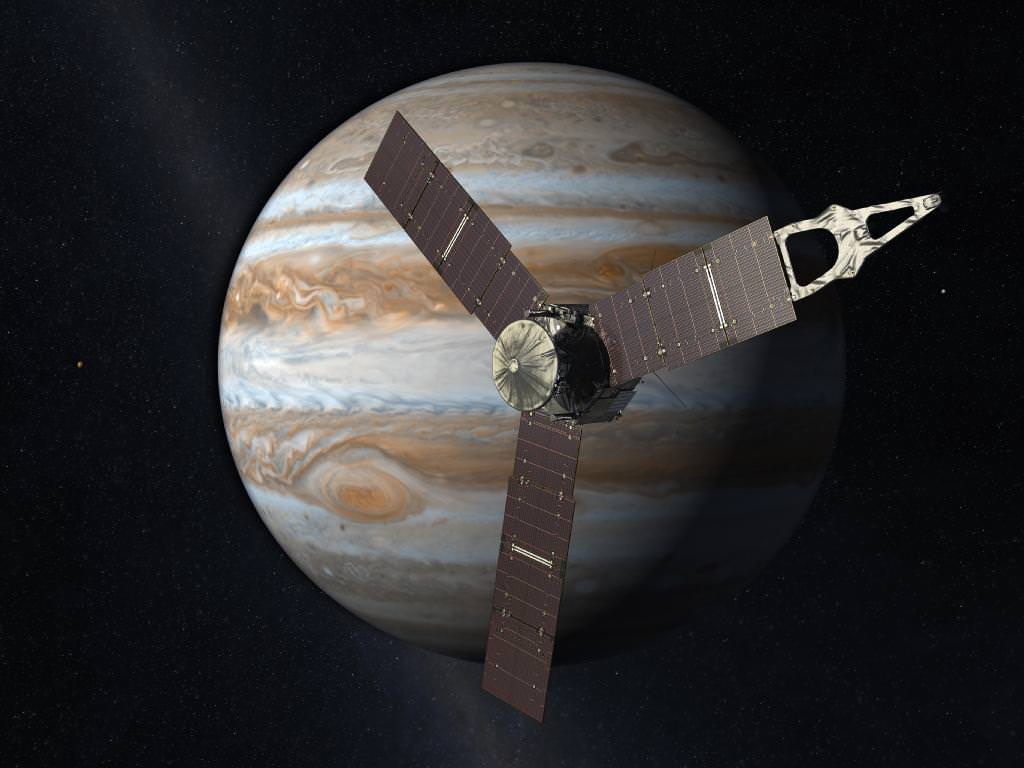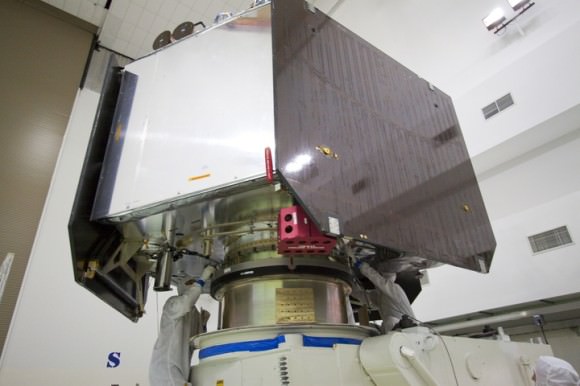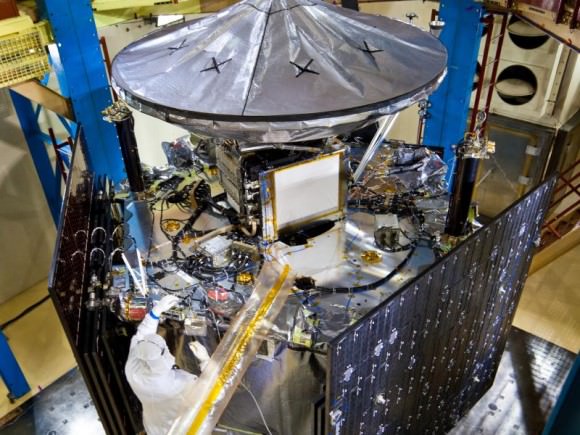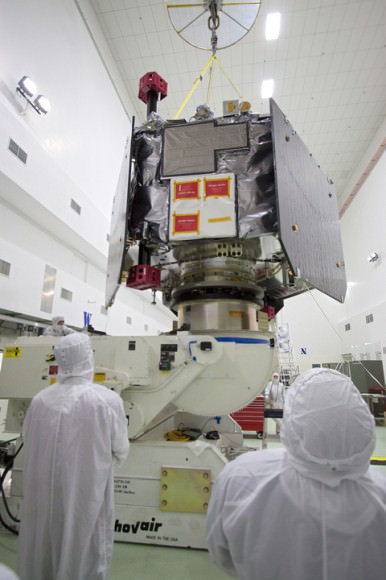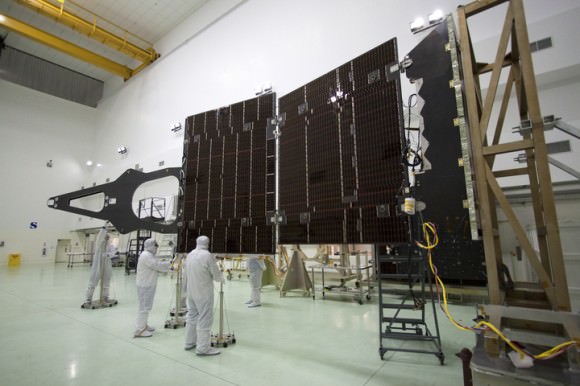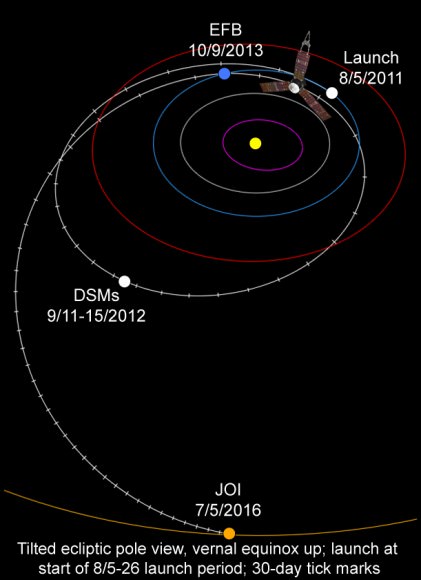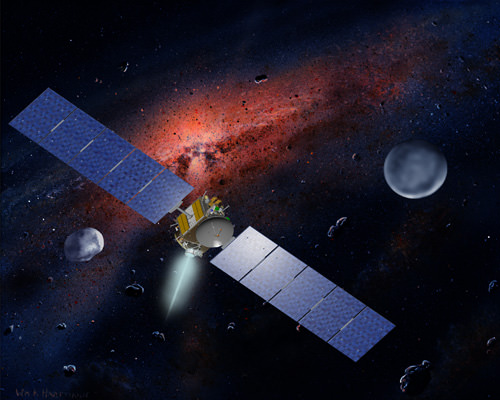[/caption]
NASA’s revolutionary Dawn Asteroid Orbiter has begun the final approach phase to the giant asteroid Vesta and snapped its first science image. The image was taken on May 3, when Dawn was approximately 1.21 million kilometers (752,000 miles) distant from Vesta using the science imager known as the Framing Camera.
Besides the pure delight of seeing Vesta up close for the first time, the images play a crucial role in navigating Dawn precisely through space and successfully achieve orbit around the protoplanet that nearly formed into a full fledged planet.
Vesta is the second most massive object in the Asteroid Belt and is 530 kilometers (330 miles) in diameter.
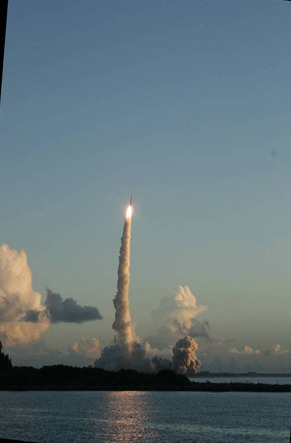
Dawn should be captured into orbit about Vesta around July 16 as the engineering team works to maneuver the spacecraft to match the asteroids path around the sun using the exotic ion thrusters. Using the background stars in the framing camera images, they will be able to determine Dawn’s location in space relative to the stars in order to precisely navigate the spacecrafts trajectory towards Vesta.
“After plying the seas of space for more than a billion miles, the Dawn team finally spotted its target,” said Carol Raymond, Dawn’s deputy principal investigator at NASA’s Jet Propulsion Laboratory in Pasadena, Calif. “This first image hints of detailed portraits to come from Dawn’s upcoming visit.”
The best images of Vesta to date were taken by the Hubble Space Telescope. Jim Adams, Deputy Director of Planetary Science, told me that the images from Dawn’s Framing Camera will exceed those from Hubble in a few weeks.
Dawn will initially enter a highly elliptical polar orbit around Vesta and start collecting science data in August from an altitude of approximately 1,700 miles (2,700 kilometers). The orbit will be lowered in stages to collect high resolution data as Dawn spends about a year collecting data from its three science instruments.
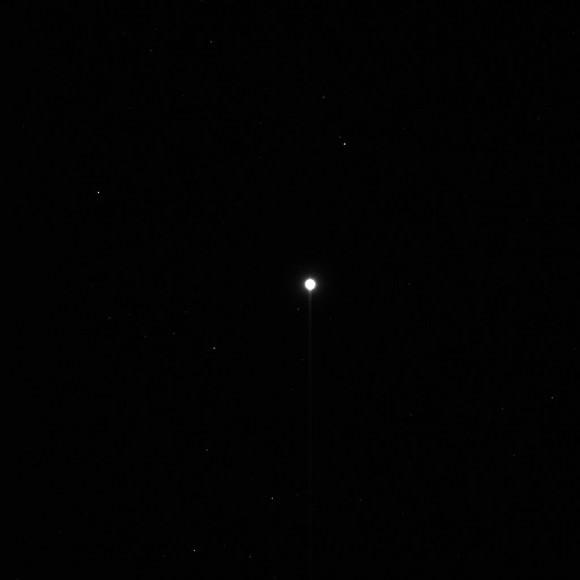
This image shows the first, unprocessed image obtained by NASA's Dawn spacecraft of the giant asteroid Vesta in front of a background of stars. It was obtained by Dawn's framing camera on May 3, 2011, from a distance of about 1.2 million kilometers (750,000 miles). Vesta is inside the white glow at the center of the image. The giant asteroid reflects so much sunlight that its size is dramatically exaggerated at this exposure. Image credit: NASA/JPL-Caltech/UCLA/MPS/DLR/IDA
Thereafter Dawn will be targeted to Ceres, the largest object in the Asteroid Belt which it will reach in 2015.
Dawn is an international mission.
The framing cameras have been developed and built under the leadership of the Max Planck Institute for Solar System Research, Katlenburg-Lindau, Germany, with significant contributions by the German Aerospace Center (DLR) Institute of Planetary Research, Berlin, and in coordination with the Institute of Computer and Communication Network Engineering, Braunschweig. The framing camera project is funded by the Max Planck Society, DLR, and NASA.
The Visible and Infrared mapping camera was provided by the Italian Space Agency. The Gamma Ray Detector was supplied by Los Alamos National Labotatory.
Read more about Dawn in my prior story:
Revolutionary Dawn Closing in on Asteroid Vesta with Opened Eyes
